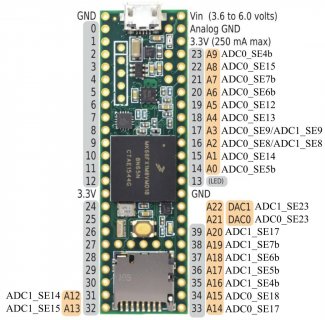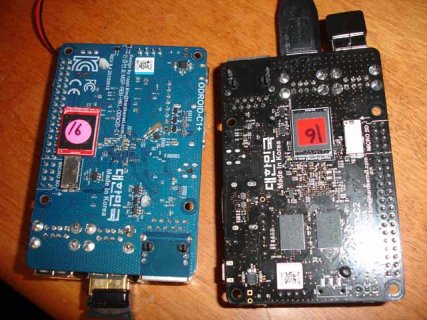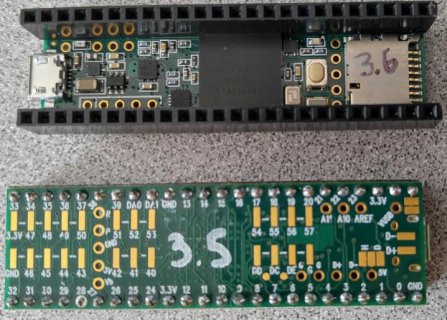KurtE
Senior Member+
FYI - I have played around with this, to be able to use the pins associated with the SDCARD for SPI pins, Uart pins, ...Oh, i completely missed that info.
This means someone could just edit the std sd - lib to use the SD-Slot with SPI ?
I'm could do that.. at least, we'd had a compatible way to use the inbuilt slot, then. preliminary .
I minor possible update to the core and SPI projects to allow this. I set it up to have those pins setup as pins 58-63:
My version of Core project with this is up at: https://github.com/KurtE/cores/tree/T35_USE_SDCARD_PINS it has a pull request that probably won't happen: https://github.com/PaulStoffregen/cores/pull/161
Likewise the SPI changes are at: https://github.com/KurtE/SPI/tree/T35_USE_SDCARD_PINS again pull request: https://github.com/PaulStoffregen/SPI/pull/19
The pin ALT table looks like:
Code:
58 PTE0 ADC1_SE4a ADC1_SE4a PTE0 SPI1_PCS1 UART1_TX SDHC1_D1 TRACE_CLKOUT I2C1_SDA RTC_CLKOUT
59 PTE1 ADC1_SE5a ADC1_SE5a PTE1/LLWU_P0 SPI1_SOUT UART1_RX SDHC0_D0 TRACE_D3 I2C1_SCL SPI1_SIN
60 PTE2 PTE2/LLWU_P1 ADC1_SE6a PTE2/LLWU_P1 SPI1_SCK UART1_CTS_b SDHC0_DCLK TRACE_D2
61 PTE3 ADC1_SE7a ADC1_SE7a PTE3 SPI1_SIN UART1_RTS_b SDHC0_CMD TRACE_D1 SPI1_SOUT
62 PTE4 DISABLED PTE4/LLWU_P2 SPI1_PCS0 UART3_TX SDHC0_D3 TRACE_D0
63 PTE5 DISABLED PTE5 SPI1_PCS2 UART3_RX SDHC0_D2 FTM3_CH0



